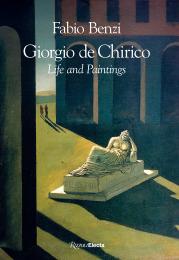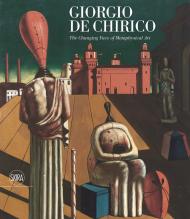This is the most comprehensive volume probing the life and work of the modern art icon Giorgio de Chirico.
Giorgio de Chirico was one of the most controversial and consequential artists of the twentieth century — a key member of the Paris avant-garde, he was a major influence on other artists, especially the nascent surrealists. His repertoire of motifs — empty arcades, elongated shadows, mannequins, trains — created images of forlorn emptiness that became iconic.
Artists inspired by de Chirico’s early work include Yves Tanguy, Pablo Picasso, Max Ernst, Salvador Dalí, and René Magritte. His influence also extended beyond painting and included writers and poets Guillaume Apollinaire, André Breton, John Ashbery, and Sylvia Plath, filmmakers Jacques Prévert and Michelangelo Antonioni, and even David Bowie, who admired de Chirico’s genderless tailors’ dummies that inspired his music videos.
After the Great War, he turned toward neoclassicism and bitterly fell out with the surrealists and the mainstream modernist movement — in the process, becoming an outspoken outsider of the art world.
This in-depth examination of the artist’s life and work by the world’s foremost de Chirico authority is based on new archival research and offers a fresh view of de Chirico’s relationship with surrealism, fascism, forgery, and the European avant-gardes.
About the Author:
Fabio Benzi is considered the world’s foremost expert on Giorgio de Chirico. He is a professor at the University of Chieti-Pescara and a board member of Fondazione de Chirico, and he has curated exhibitions in Rome, Venice, Milan, Moscow, Paris, Vienna, New York, Tel Aviv, Istanbul, and London.



